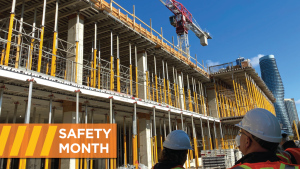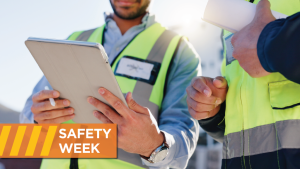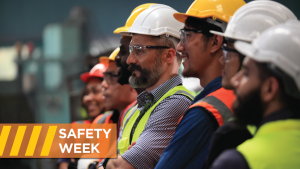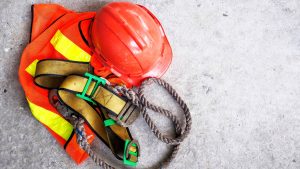British Columbia’s safety authority is pushing forward to ensure construction’s highest jobs stay safe.
WorkSafeBC has released a bulletin in collaboration with BC Crane Safety on the hazards and challenges of top climbing a power crane.
Five people were killed in July when a tower crane collapsed while being dismantled at a construction site in downtown Kelowna, B.C.
WorkSafeBC noted when it released the bulletin how the incident pushed crane safety to the forefront.
While the release of the bulletin is significant due to the tower collapse, WorkSafeBC head of prevention services Al Johnson said the potential for tower cranes to present hazards to workers is well known and that “crane safety at WorkSafeBC has been a priority for some time.”
“Our Crane and Mobile Equipment team was established in 2008 and has created numerous resources for industry. WorkSafeBC and BC Crane Safety co-hosted Tower Crane Conferences in 2018 and 2019. These conferences were designed for industry suppliers, owners, engineers, erectors and technicians. The conference provided an opportunity to hear about and discuss the latest and best safety practices, including tower crane operation, inspection, standards, certification and new technology,” Johnson said.
The bulletin focuses on the dangers of “top climbing,” which it defines as a common way of assembling or dismantling a tower crane on a site through use of a top climbing glide structure installed around the tower crane’s mast. The guide is used to create a gap for adding and removing mast sections and rollers are located at the middle and bottom of the top climbing guide on all four corners. When the system is weight-balanced, the rollers allow the guide to travel up and down the mast.
“As we all know, a crane collapse can be catastrophic,” Johnson said. “If the climbing device is placed on a K-frame horizontal support that is too high up the mast structure, the ram can push the top climbing guide too high. In this situation, the rollers in the middle of the top climbing guide may be positioned above the top of the mast structure and can be unsupported. This puts the top climbing guide and the upper structure of the crane at risk of collapse.”
The bulletin also examines employer responsibilities such as ensuring the assembly supervisor and the lead hand are experienced and competent in each phase of top climbing and lists legal and regulatory requirements related to crane assembly and dismantling.
Johnson stressed WorkSafeBC has focused on crane safety for some time, including establishing the Provincial Crane Inspection Team (PCIT) in 2008, which focuses on safe tower crane assembly/disassembly, operation, inspection and safe use of equipment including mobile cranes, concrete pump trucks, elevating work platforms, boom trucks, foundation and pile driving equipment, and rigging.
“PCIT actively works with BC Crane Safety to develop multiple resources for crane operators, such as a crane and equipment operator competency document, a provincial crane operator training curriculum and others,” Johnson said.
WorkSafeBC also has a Crane and Mobile Equipment Initiative, a component of their high-risk strategies for 2021-2023.
“The Crane and Mobile Equipment Initiative aims to identify and eliminate unsafe work practices and equipment hazards that have the potential to cause catastrophic events, including serious injuries and deaths,” Johnson said.
“WorkSafeBC’s Policy, Regulation and Research Division has multiple crane related OHS Regulation revisions underway in 2021. These revisions may result in changes to operator certification, equipment inspection and equipment operation requirements.”
Johnson added WorkSafeBC is using a data-driven approach to create safety initiatives including industry surveys, inspections, orders issued and incident investigation findings.
“The team collaborates with WorkSafeBC’s Risk Analysis Unit to assess the root causes of crane incidents. For example, a 2020 survey revealed that 61 per cent of incidents involving tower cranes were caused by operator error, and a further 19 per cent were caused by mechanical failure. As a result, operator training, crane assembly/disassembly, preventative maintenance programs, and equipment repair are part of WorkSafeBC’s inspection strategy,” he said.
The bulletin, other resources and documentation are available on the WorkSafeBC tower crane safety resource site.
Follow the author on Twitter @JOCFrey.











Recent Comments
comments for this post are closed